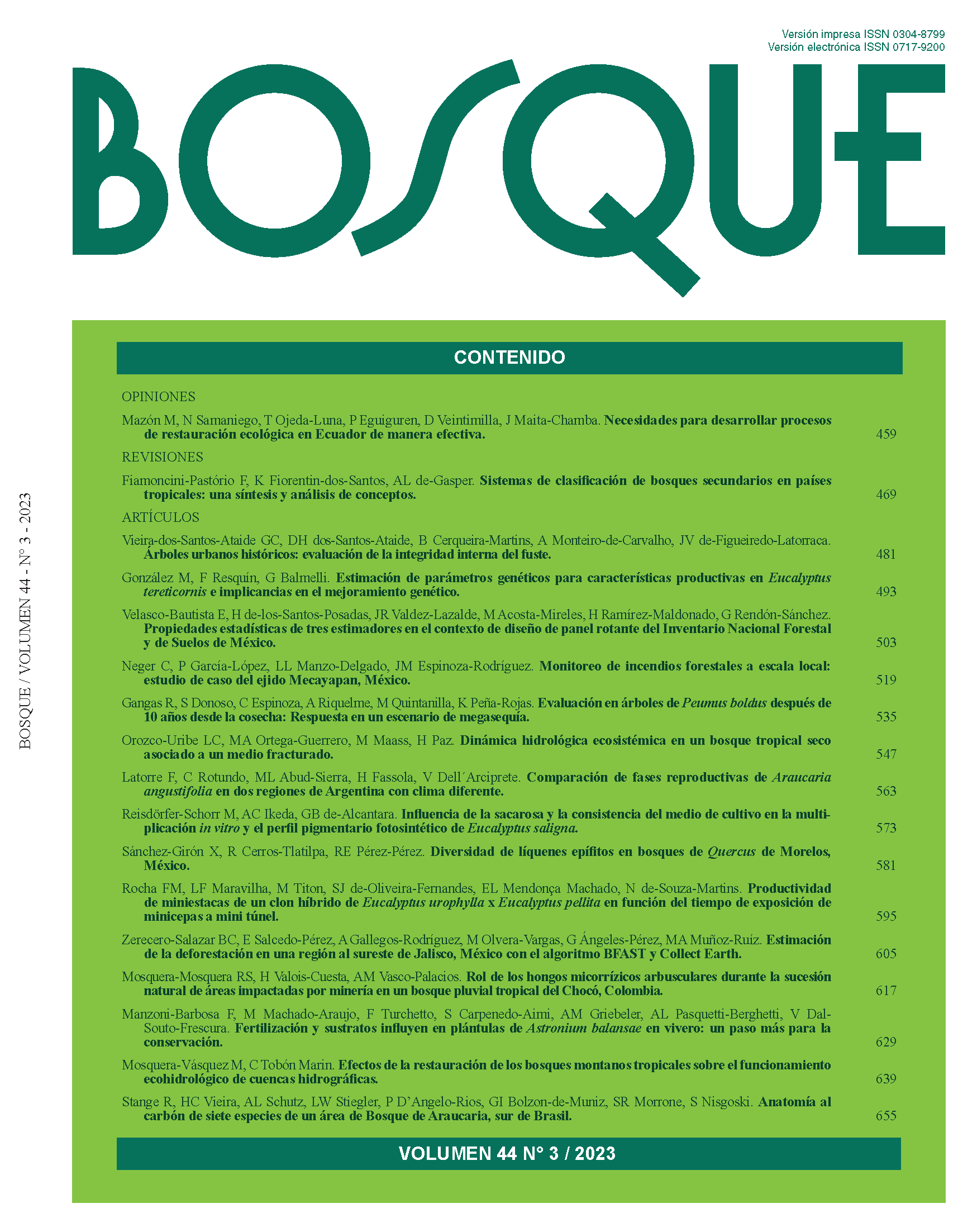Árboles urbanos históricos: evaluación de la integridad interna del fuste
Contenido principal del artículo
Resumen
Además de los beneficios que aportan todos los árboles, en general, el valor cultural y afectivo que aportan los árboles urbanos históricos contribuye a la calidad de vida de las ciudades. A medida que envejecen, el cuidado con su mantenimiento debe ser cuidadoso y constante, con el objetivo de reducir los riesgos asociados. Así, el objetivo del presente estudio fue identificar y estimar la extensión de las áreas internas lesionadas en el tronco de árboles urbanos históricos. Se evaluaron 45 árboles de Eucalyptus robusta ubicados en una plaza popular en la ciudad de Nova Friburgo-RJ, Brasil. Se realizó un análisis visual de la copa, tronco y sistema radicular, seguido de evaluaciones complementarias de tomografía acústica y, cuando fue necesario, resistografía. Se ajustaron modelos matemáticos para inferir sobre la relación e influencia de las características dendrométricas (altura total, altura a la primera rama, diámetro a 1,30 m sobre el suelo y diámetro de copa) y la amplitud resistográfica media sobre la velocidad media de propagación de la onda acústica. La mayoría de los árboles presentó algún tipo de lesión externa en el tronco y, en general, los árboles con lesiones severas también presentaron alteraciones en la velocidad de propagación de las ondas acústicas y en el perfil de resistencia a la perforación. La combinación de diferentes técnicas permite identificar zonas con posibles lesiones internas en los troncos de árboles urbanos históricos. Sin embargo, se observa que la extensión de estas áreas varía entre las técnicas utilizadas.

